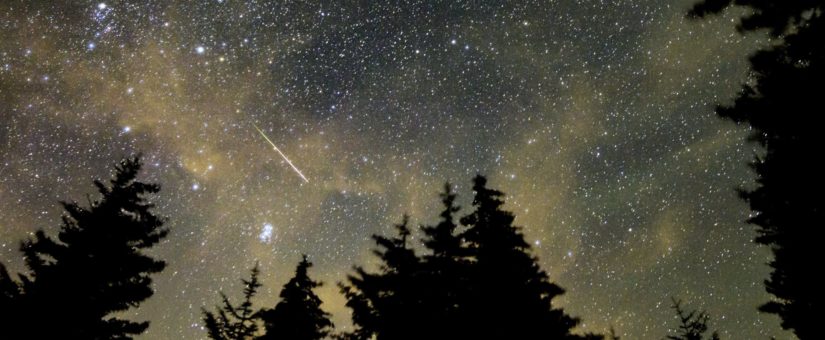
Meteor Shower Peaks Tonight
- Posted by Barrington Hills
- On August 11, 2022
Mick Zawislak | Daily Herald |August 11, 2022
One of the best annual meteor showers to watch will be hindered this year by the bright light of a full moon, but that shouldn’t stop you from enjoying the show, observers say.
Perseid (per-see-id) meteors are visible all month, but the peak is expected to be tonight into Friday morning. A full moon will wash out the trails of fainter meteors— what we see when minuscule fragments
of debris from a comet burn up as they hit Earth’s atmosphere.
Even with a clear sky, the moon’s influence will diminish the number of visible meteors from about one a minute to perhaps 10 an hour, experts say.
However, with patience, preparation and perhaps some bug spray, skywatchers can still make a night of it.
“This is one of the most regular (meteor showers) and the one people can rely on the most to at least see some,” explained Eric Priest, professor of astronomy at the College of Lake County.
“It’s just bad luck this year with the full moon.”
Fainter meteors will be visible in darker areas away from artificial lighting, but let your eyes adjust for 20 to 30 minutes, skywatchers say. Face east and focus on a large area of the sky, not just one point. And stay out an hour or more, if possible.
“Your eyes will normally take about 30 minutes to dilate, which means you’ll be able to see fainter objects,” said Anthony Yelk, president of the Lake County Astronomical Society.
Amateur astronomers know that to see faint objects, it’s best to look just left or right of a point they want see, because that’s the way our eyes work, he added.
And while meteors can appear anywhere, looking northeast with something between the moon and yourself, if possible, gives the best chance to see one in the Perseid shower. Watch after midnight when the moon is lower in the sky.
As a bonus, meteor showers are best viewed without binoculars or telescopes, making the activity accessible to anyone and a good introduction to astronomy.
“The best way to watch a meteor shower is to lay back and look at the sky,” said Jeremy Benson, a STEAM (Science, Technology, Engineering, Arts, Mathematics) educator at Northern Illinois University.
“Maybe a blanket or a chaise lounge would be your best tool,” he added. “They (meteors) can be anywhere and they’re gone in an instant.”
NIU is hosting a Stargazing event beginning at 6:30 p.m. today at the Bliss Creek Golf Club in Sugar Grove. Talks about space exploration, the Webb space telescope and the annual Perseid meteor shower will be followed by night sky viewing. Visitgo.niu.edu/stemcafefor details.
Meteor showers happen when the earth runs into a comet’s debris trail, said Michelle Nichols, director of public observing for the Adler Planetarium.
“What you’re seeing is a quick streak of light as these things burn up —you’re seeing the glowing air around it,” she said.
Meteors are the remnants of old comets. They can happen anywhere, but with Perseid, the meteor trails lead to the constellation Perseus in the northern sky, Benson said.
Perseids can be very active, generating 60 or more meteors per hour at the peak.
“This debris field tends to be a little thicker and a little wider — more reliable,” according to Priest.
Unfortunately, the source of the Perseids meteor shower, Comet Swift-Tuttle is not scheduled for another Earth pass until 2126, according to Yelk.
“But the Perseids do give a chance to see an intriguing portion of it,” he said. There is no best time to view Perseids.
“I tell people 2 a.m. just to give them a target,” Priest said
To the left of the full moon early Friday will be the planets Saturn, Jupiter and Mars. Jupiter is the brightest, Nichols said. Unlike stars, planets have more robust light and tend not to “twinkle” like stars, she added.


